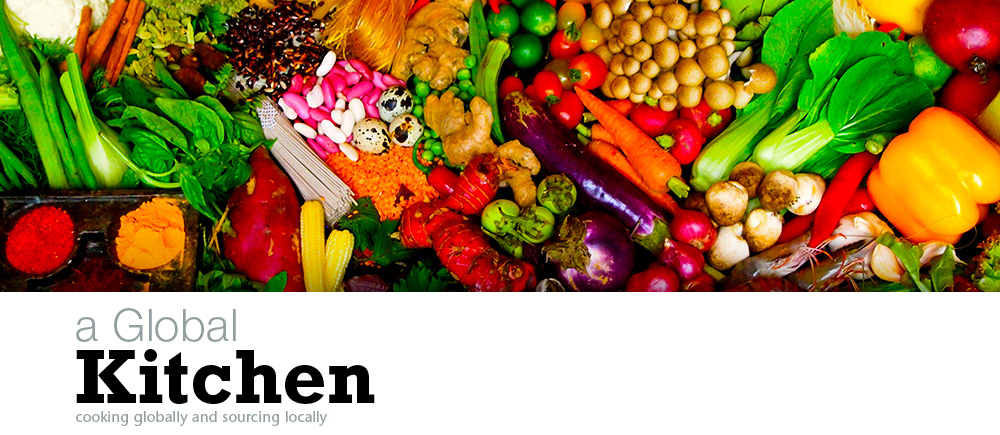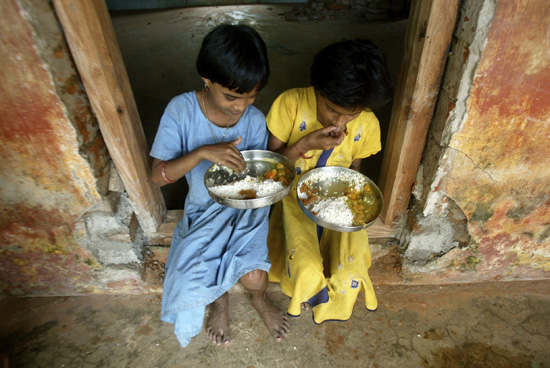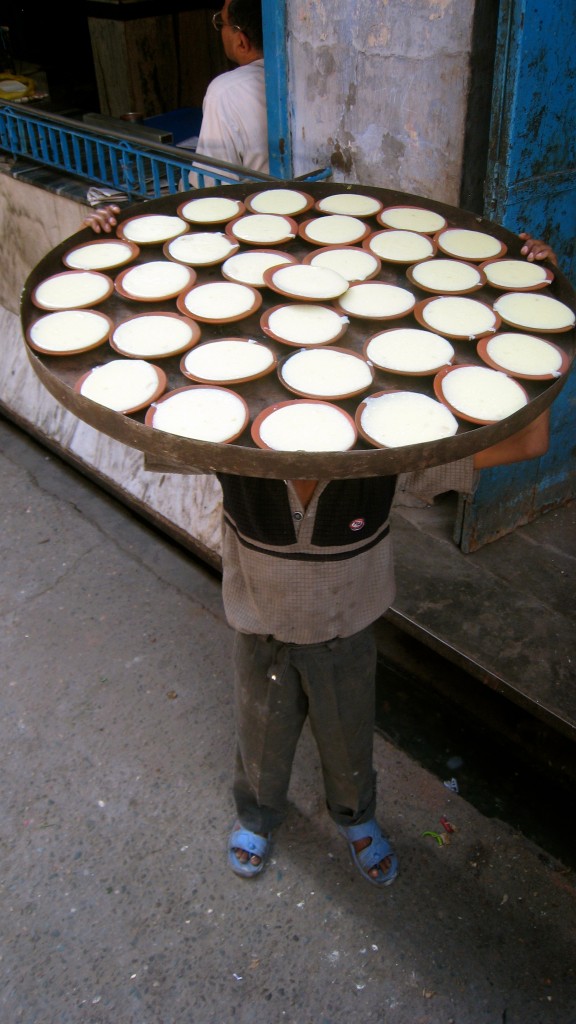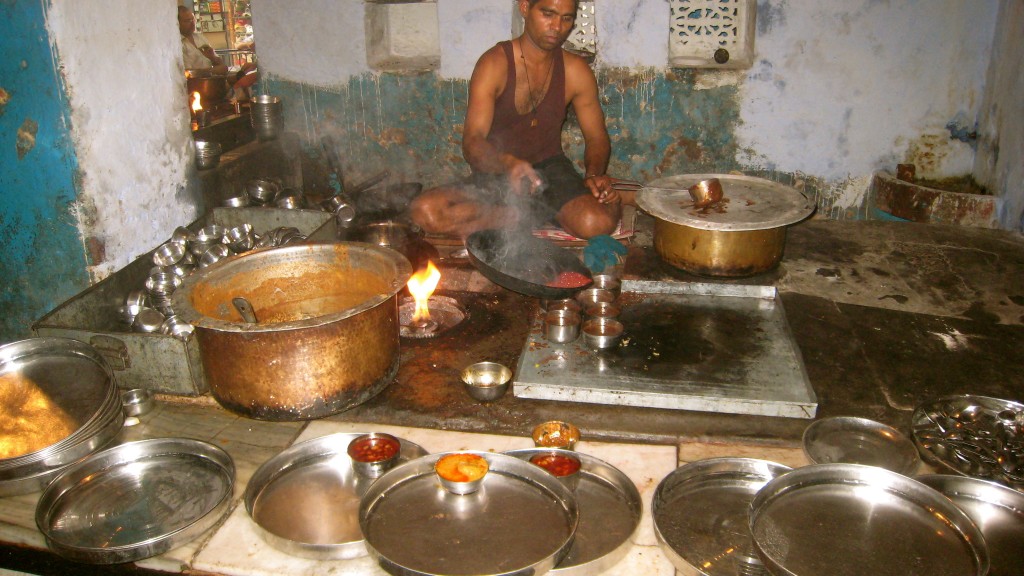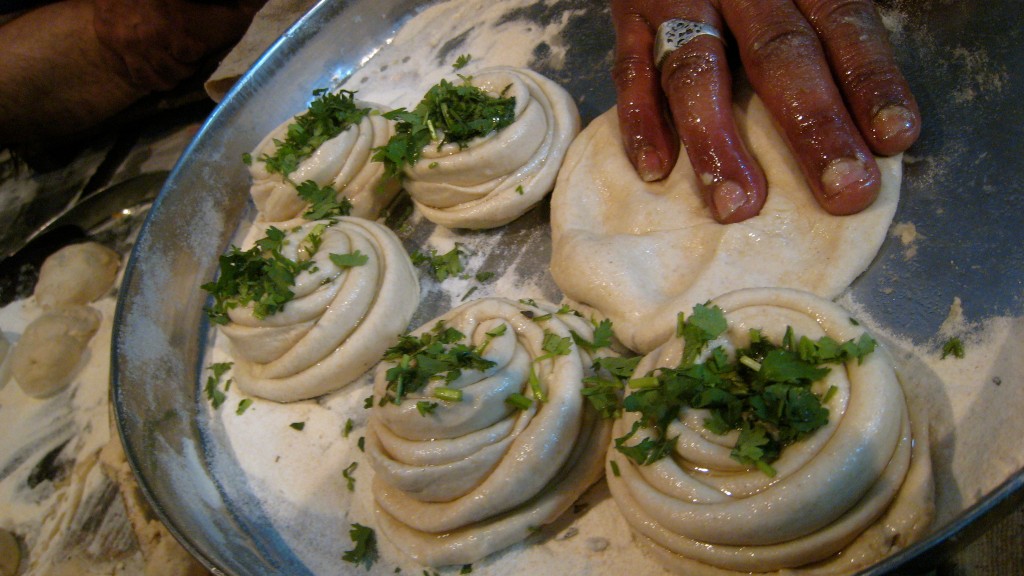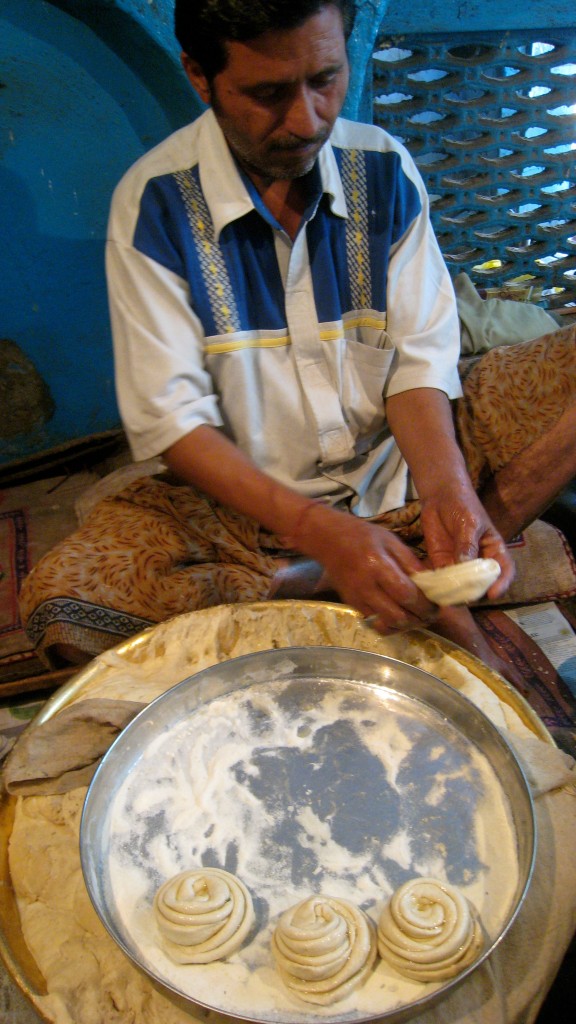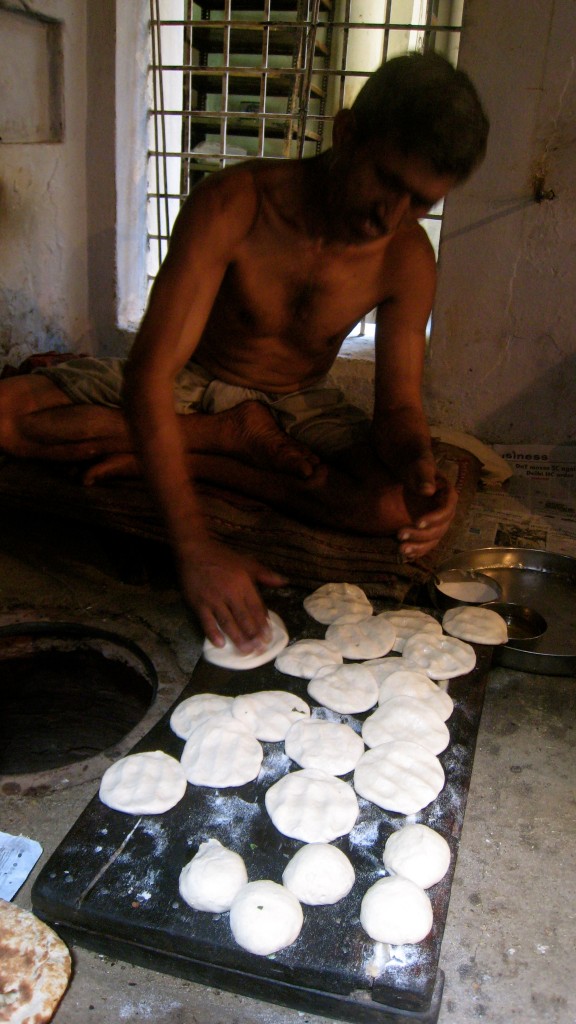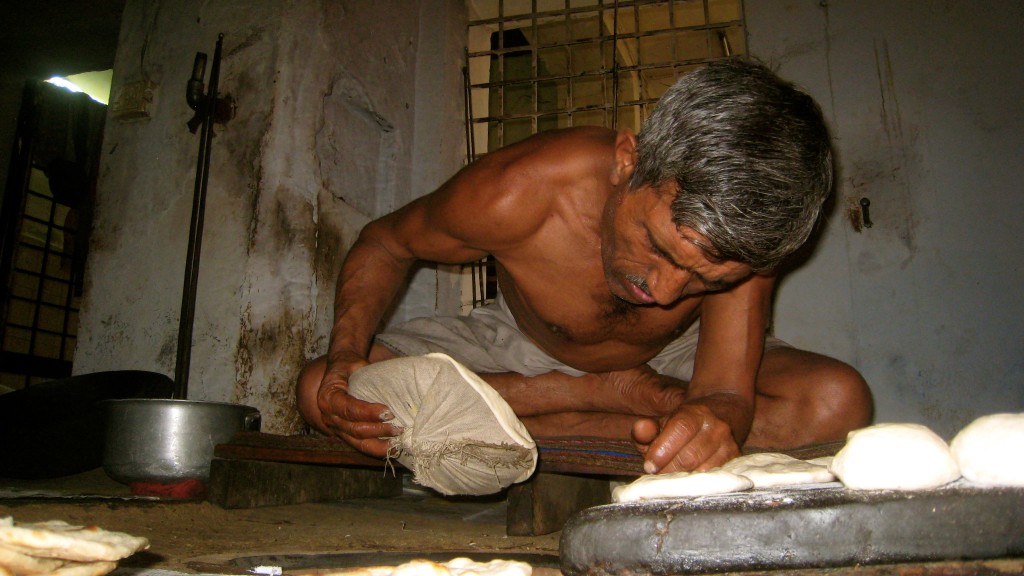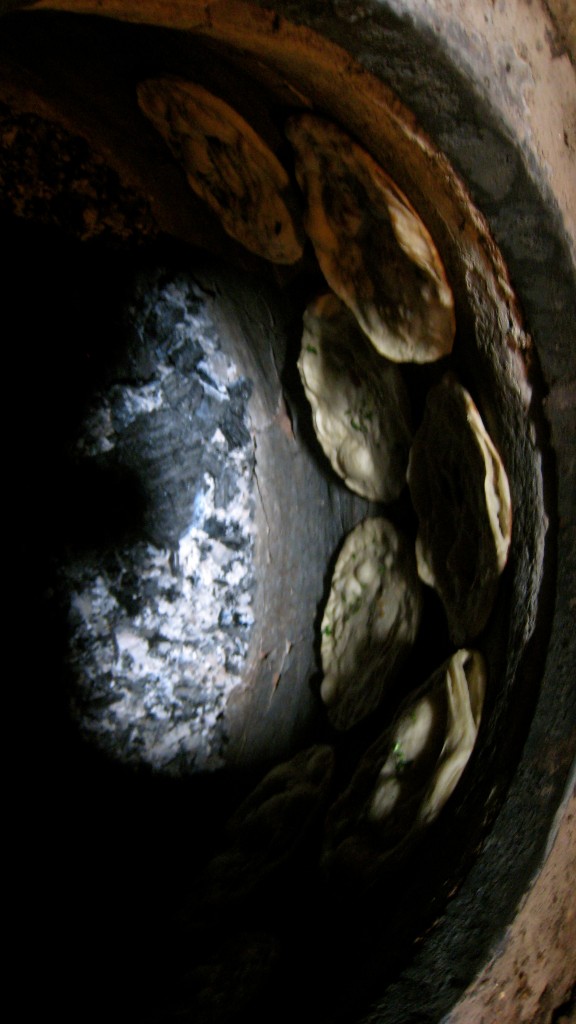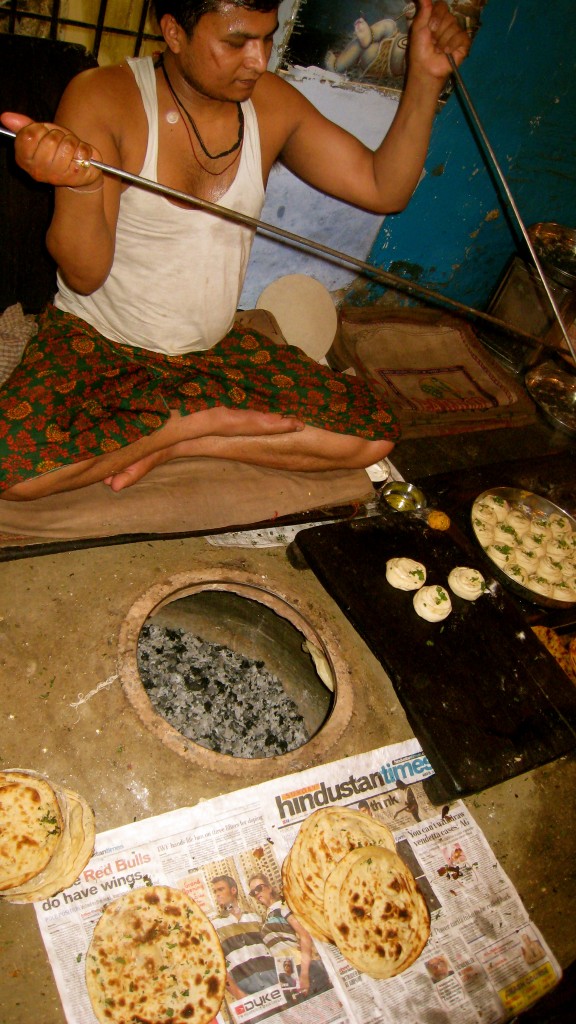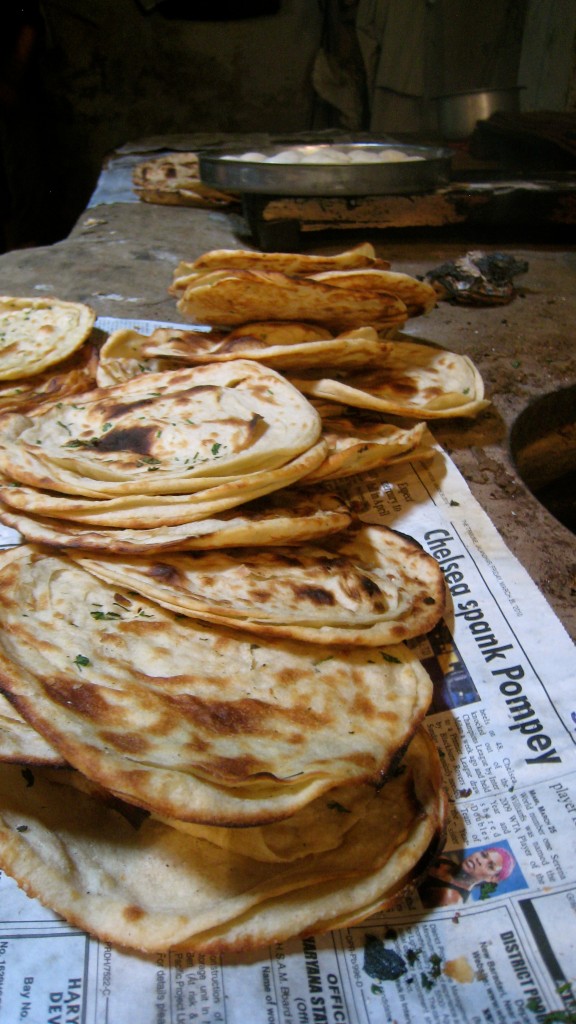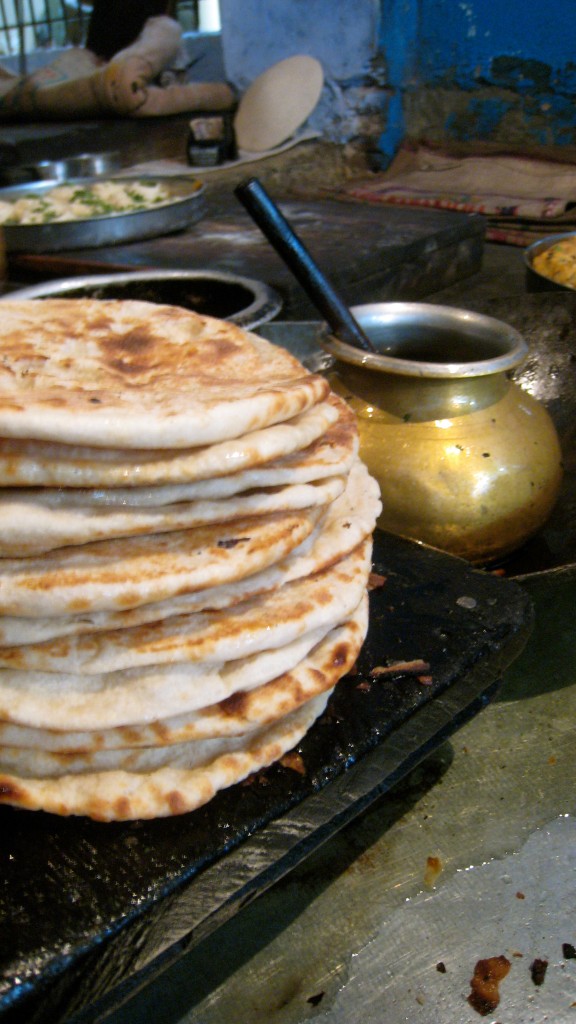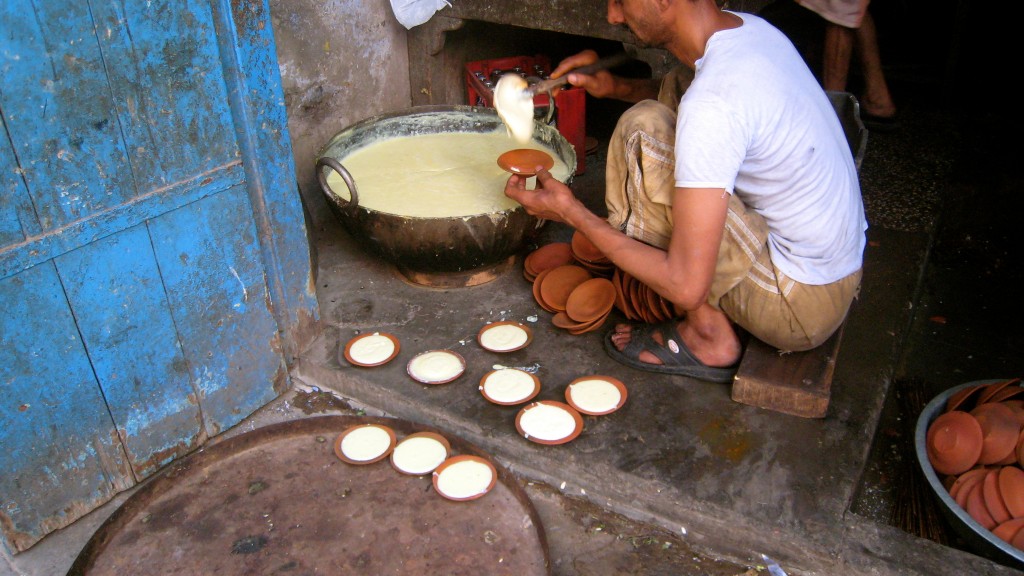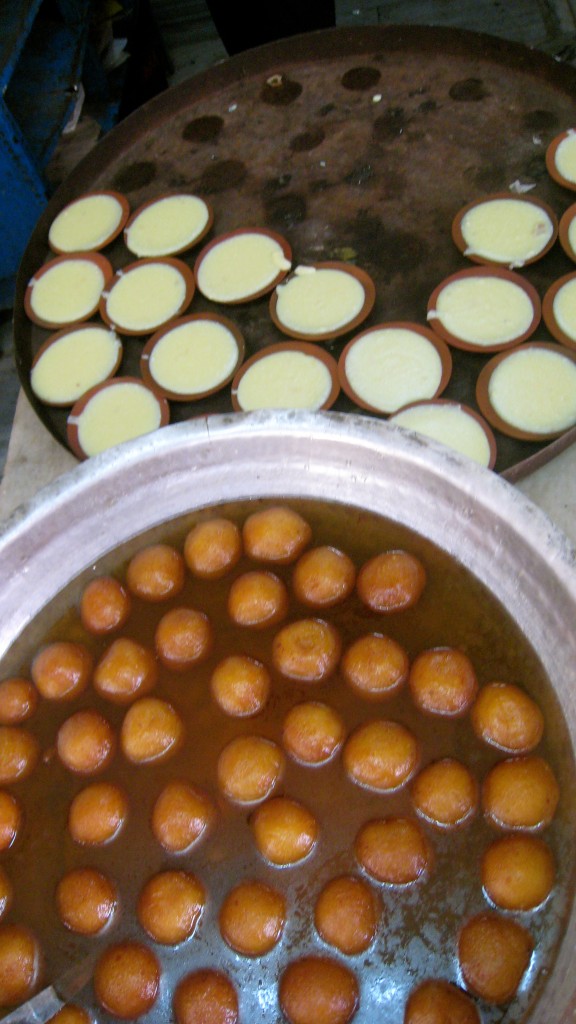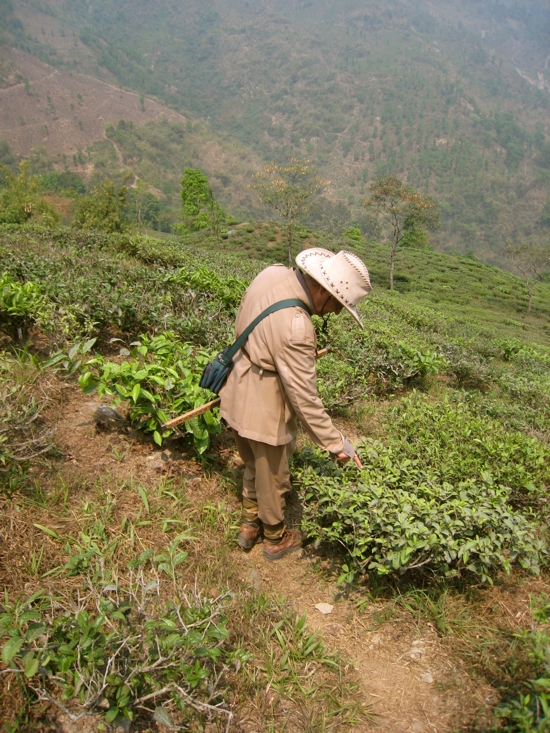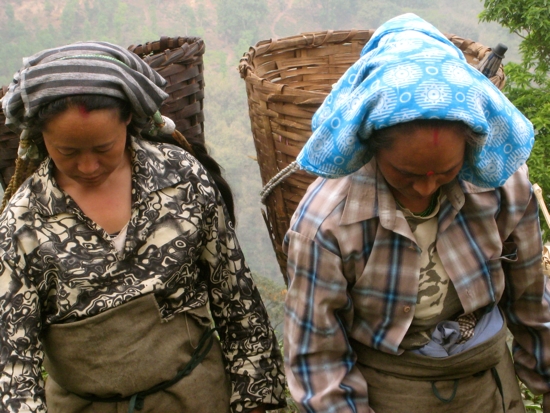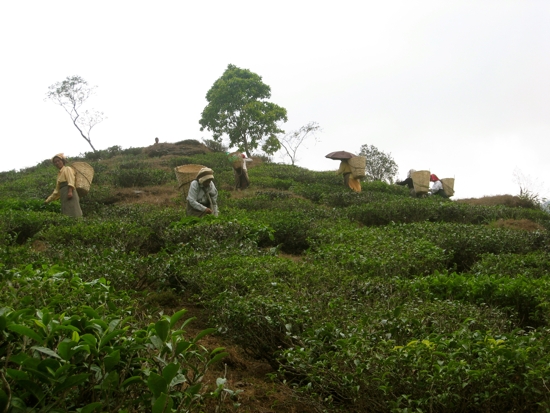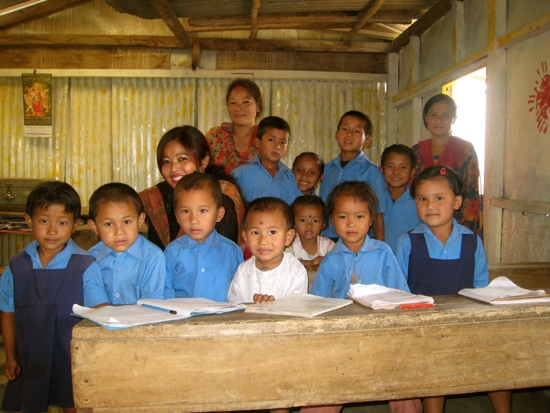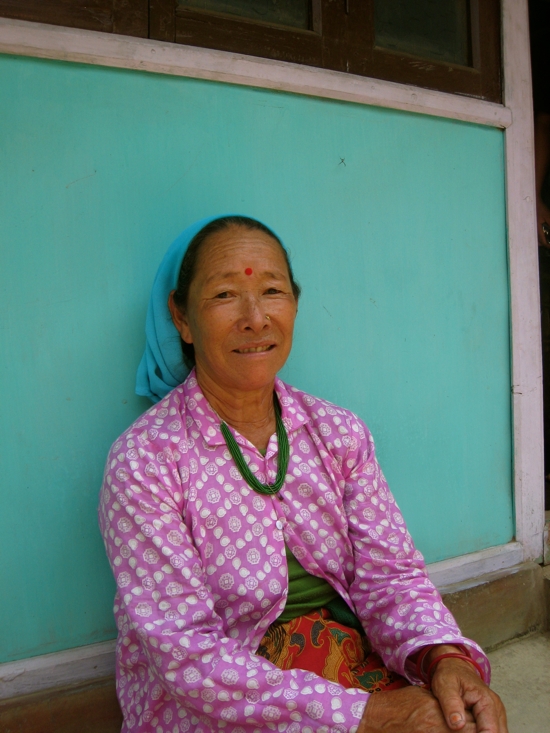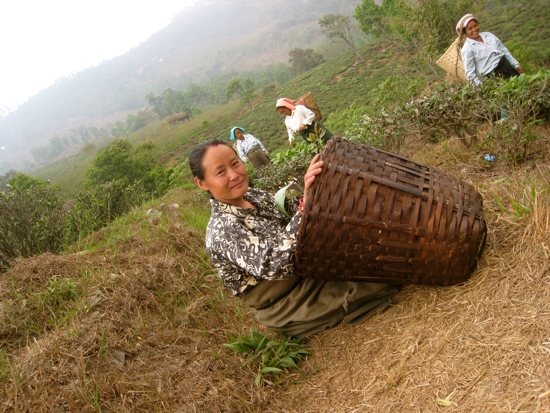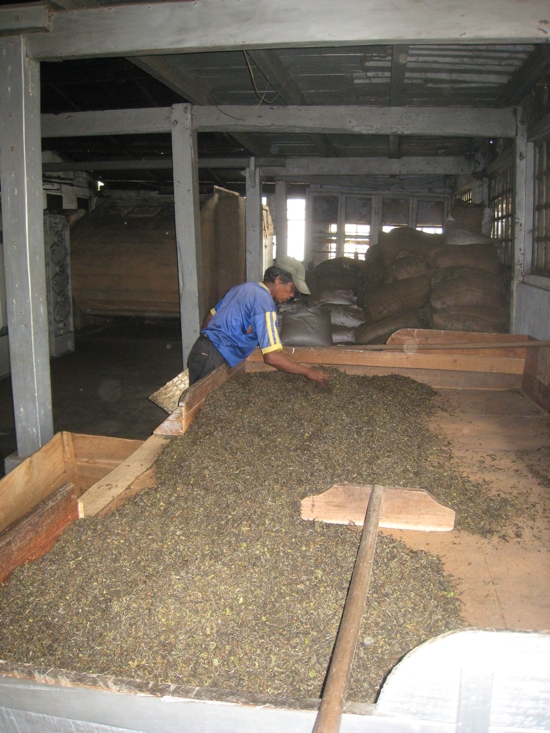In the fall of 2008 I travelled from Delhi to Turin, Italy to participate in Terra Madre, Slow Food’s conference that happens every few years and brings together food artisans, activists and many others concerned about safeguarding and promoting all aspects of food cultures from around the world. There I met some of the Slow Food Canada contingent, one of them being Lulu Cohen-Farnell of Real Food for Real Kids (check them out as they are doing great work with school lunches in Toronto). She told me about an article that she had recently read about a group of monks in India feeding schoolchildren in different states throughout India. Upon my return I found the article online and read that the foundation was called Akshaya Patra and it originated and was associated with the ISKCON temple in Bangalore. I was unable to visit any of their cooking centres until a few years later on a trip to the city of Puri, in the eastern state of Orissa. Here is an article, with a photo slideshow, I wrote about their school lunch program for the online website Zester Daily.
Tag Archives: India
Feeding The Soul At The Golden Temple
 When visiting India most people want to try and see the majestic Taj Mahal. Second on their list should be a journey to Amritsar to visit the Sikh holy site, the Golden Temple. What amazed me the most was that such serenity and peacefulness could exist while outside of its gates the cacophony of rickshaws horns and the systematized chaos that is Amritsar and India. Also, that the langar, the canteen which feeds delicious vegetarian meals to all visitors at most Gurdwaras, operates on such a scale that it feeds anywhere from 20,000 to over 100,000 visitors daily. I wrote about my time there for the online magazine Zester Daily. Click here for the link.
When visiting India most people want to try and see the majestic Taj Mahal. Second on their list should be a journey to Amritsar to visit the Sikh holy site, the Golden Temple. What amazed me the most was that such serenity and peacefulness could exist while outside of its gates the cacophony of rickshaws horns and the systematized chaos that is Amritsar and India. Also, that the langar, the canteen which feeds delicious vegetarian meals to all visitors at most Gurdwaras, operates on such a scale that it feeds anywhere from 20,000 to over 100,000 visitors daily. I wrote about my time there for the online magazine Zester Daily. Click here for the link.
Jason Taylor and Chintan Gohil of the Source Project created this wonderful video about the langar at the Golden Temple
Amritsari Comfort Food at Kesar da Dhaba
My original intention of visiting Amritsar, like the millions of other annual visitors, was to see the principle pilgrimage site for followers of the Sikh religion, the Golden Temple. Specifically, I planned to spend a couple of days in the vast kitchen complex to find out how the temple managed to feed over 100,000 people each day.
My flight was delayed in Delhi making my arrival in Amritsar closer to 8pm. I hadn’t eaten since noon and was famished. A friend, Mayur Sharma, who co-hosts a television show in India called Highway on My Plate, suggested if I had time to make a stop at a well-known dhaba nestled in the crowded alleyways of the older part of Amritsar. I exited the airport, found a taxi and surprised the driver by asking in Hindi to take me to the famous Kesar da Dhaba. He smiled, gave me an approving head tilt and whisked me towards Amritsar.
Dhabas are roadside eateries dotted along the national highways of India. I like to consider that they are similar in concept to the traditional French country bistro, where many of them offer, cheap, plentiful delicious meals yet in a more rustic setting. All of them started out as poorly built shacks specializing in one or two items. If they gained popularity with locals and travellers, and possessed business acumen, a purpose built restaurant would be set up to cater to their future needs. Nowadays, if you were to travel from New Delhi through the state of Punjab to the Pakistani border and ask any dhaba or restaurant that has been around since partition the story would be similar to Kesar da Dhaba’s.

Customers wait for their vegetarian takeout. For them it was stuffed potato and cauliflower parathas, raita, green mango pickles and mint chutney.

A deg is used to cook the ma ki dal. A deg is a traditional cooking vessel made out of brass or copper whose shape and thick bottom are essential in allowing for even heat distribution during long cooking processes. Ma ki dal cooks for close to 14 hours at Kesar da Dhaba.
In 1916, in Sheikupura, Pakistan Mr. Lala Kesar Mal and his wife Parvati opened a small food stall serving basic dal and paratha. When Partition occurred in 1947 the recipes for these two dishes travelled with them and settled in Amritsar. And ever since visitors to Kesar da Dhaba are treated to homemade, simple vegetarian food.
Ramesh Mehra is now the fourth generation managing the restaurant. He explained that as time passed they added more dishes to the menu to offer greater options to customers but have not changed the recipes of their main dishes specifically the popular tadka dal, ma ki dal and phirni. Since they need to make over 4,000 parathas each day they once tried to use a machine to mix the dough but they received too many complaints so they switched back to all of the breads being hand mixed and rolled.
The dining areas felt tired and tattered. A fresh coat of paint and some changes in lighting could help improve the setting. Whatever was lacking in décor was made up in the flakiness of the laccha paratha, the rich softness of the spicy tadka dal, the tanginess of a cooling lassi and the welcoming Punjabi hospitality.
Note: I took this trip to Amritsar in April 2010.
Makaibari Tea Estate
Some tastes stay with you forever. The moment the warm amber liquid slid from the edge of a hand shaped teacup, onto my lips, and slowly swished around in my mouth, I knew I had tasted something special. I put the teacup down, picked up the small gold sticker and read ‘First Flush 2005 Makaibari Tea Estates, Darjeeling’. The loose-leaf tea, picked several months earlier, was a gift from a dinner guest the night before. I had drunk loose-leaf tea before but it was generally an herbal mixture. My go to comfort tea, and still is, was Twining’s Earl Grey. But there was something unique with this liquid brew. All at once, there was delicacy and depth; a natural sweetness with a touch of bitterness; an earthiness that reminded me of walking over a bed of fallen leaves during mid autumn in Gatineau park. I had not tasted a tea whose flavour was as well rounded as this one.
The Makaibari First Flush instantly became my special afternoon pick me up tea. A year later I also started using Makaibari’s Apoorva tips when making chai. I learned that Makaibari followed biodynamic and permaculture principles. I was intrigued and wanted to learn more by visiting the tea estate. This was finally possible in March 2010 when I made the journey through the winding roads of the Himalayas eventually reaching Kurseong, just south of the hill station of Darjeeling.
Makaibari is believed to be the oldest tea estate in Darjeeling having been established in 1859. Four successive generations of the Banerjee family have run the estate with its current owner, the eccentric and entertaining Rajah, having become a pioneer and champion in the cultivation of organic tea in Darjeeling. Even during the late 1970s Rajah started to see the effects that soil erosion was having on his own and other various tea estates that dot the hills of Darjeeling. He slowly started to implement permaculture practices and over the following decade slowly adopted organic agriculture towards the management of the tea gardens becoming the first organic tea plantation in India in 1986 (and later on the first to have their teas certified Fair Trade). During the 1980s he saw how these changes were producing beneficial effects on the taste of the tea and the health of his plants. But he wanted push things even further and by 1991 had transformed the estate into a fully biodynamic system, where the soil fertility, plant growth, and livestock are all interrelated.
These holistic and alternative practices are also carried over to the 7 village communities, whose many habitants work for Makaibari, spread around the plantation. A joint body of elected members, primarily women, have bi-monthly meetings to cover development issues and how funds for the community should be spent. Improved sanitation, retirement stipends and life long health care became immediate priorities. There are 3 small nurseries and 3 primary schools for 3-10 year olds on the estate. Teenagers go to other nearby villages for high school. I spent several days at the plantation and stayed in the home of a family living in one of the villages. Only the husband worked in the main factory building. His parents had both worked in the tea estate – his father in the factory and mother as a picker. He made enough money now, through his work and the homestay program, that his wife did not need to take on a job outside the home. His two children were in college and had no intentions of working for Makaibari. They did however, intend to return to the area and look for more professional office jobs.
Harvesting and packaging tea requires about ninety percent manual labour. I spent several days following the tea pickers, predominantly women of Gurkha or Nepali background, up and down the steep slopes of the tea garden. They are strong women doing very laborious, back break work. It is no wonder that their children do not want to follow in their footsteps. The social and educational investments Makaibari has contributed to the communities have been successful in each successive generation getting better jobs on or off the estate.
My store of Makaibari tea is currently limited making each brew that more special. When I do get the chance to savour the delicious nectar I am reminded of the special people and communities responsible for nurturing the tea estate’s ecosystem.
